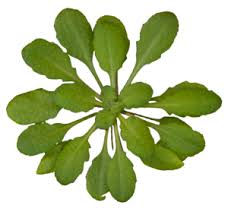Climate change-proof restoration
Local adaptation
The environment is changing at an unprecedented rate and plants are the first to respond to these changes. How plants depend on their local environment and which evolutionary mechanisms lead to local adaptation are critical questions the public is pressing evolutionary ecologists to address. In the lab, we combine quantitative genetics methods and biogeographic niche modelling to understand the genetic basis of locally adaptive fitness traits. Planting Arabidopsis thaliana across different climates over the native European range and performing genome-wide association mapping, we have identified genomic regions that determine fitness in particular environments, particularly demonstrating the importance of climate variation on adaptation The environment is changing at an unprecedented rate and plants are the first to respond to these changes. How plants depend on their local environment and which evolutionary mechanisms lead to local adaptation are critical questions the public is pressing evolutionary ecologists to address. In the lab, we combine quantitative genetics methods and biogeographic niche modelling to understand the genetic basis of locally adaptive fitness traits. Planting Arabidopsis thaliana across different climates over the native European range and performing genome-wide association mapping, we have identified genomic regions that determine fitness in particular environments, particularly demonstrating the importance of climate variation on adaptation (pdf).
Predicting plant genetic response across multiple environments
Plants have two ways to cope with climate change: they remain in the same location and adapt to new environmental conditions or migrate to track the climate they are adapted to. I am currently assessing the effect of such environmental perturbation using a genetically diverse panel of A. thaliana in controlled chamber conditions. Using the actual climate in Norwich (UK) in real time as reference conditions, we compared the fitness of plants in this climate to that of plants exposed to the predicted climate of 2100 and to those having migrated northward by 13° in 2100, where the photoperiodic regime is different. We used the experimental data from genetically diverse plants at various time of the year in these perturbed environmental conditions to predict the expected evolution of intraspecific genetic diversity. This allowed building an integrated life-cycle model for A. thaliana predicting the genetic composition of both the plant community and the seed stock. The final objective is to know how genetic diversity will ultimately face climate change when selecting genotypes adapted to increased temperatures or when migrating northward (pdf).
Optimal seed sourcing for restoration in redgrass (led by Kay Hodgins at Monash)
Australian grasslands are unique ecosystems harbouring many endemic species. In south-eastern Australia less than 1% of native grasslands remain in dwindling remnant patches. Changes in land use, invasive species, and now climate change threaten what little remains. Ecological restoration seeks to reverse this historic tide of degradation, but the challenges are many. One major question in this field has been – which seeds should we plant and at which sites? Many plant species exhibit a “home court” advantage where individuals grown in local environments are more successful relative to foreign genotypes. This has led to the widespread practice of local seed sourcing. However, given changing climates, small local populations and limited seed supplies, is this practice still the best one? How can we best manage our seed sourcing to maximise our restoration efforts? To address this question, we propose to conduct well established, yet under utilised, provenance trials, while harnessing the power of cutting-edge genomics methods to identify the genetic signatures of local adaptation as well as key environmental and genetic predictors of establishment success in an Australian foundation grassland species. We will combine our genomic analysis with ecological modelling to assess the need for assisted gene flow and conduct simulations and decision analysis to determine the likely result of distinct provenance strategies under climate change. The intended outcome of this research is to generate an evolutionary framework and a set of novel tools to optimise seed sourcing for restoration.
-
 Andhika Putra, MSc student
Andhika Putra, MSc student -
 Pr Annie Schmitt, UC Davis
Pr Annie Schmitt, UC Davis -
 Dr Kay Hodgins, Monash University
Dr Kay Hodgins, Monash University
People involved
Collaborators